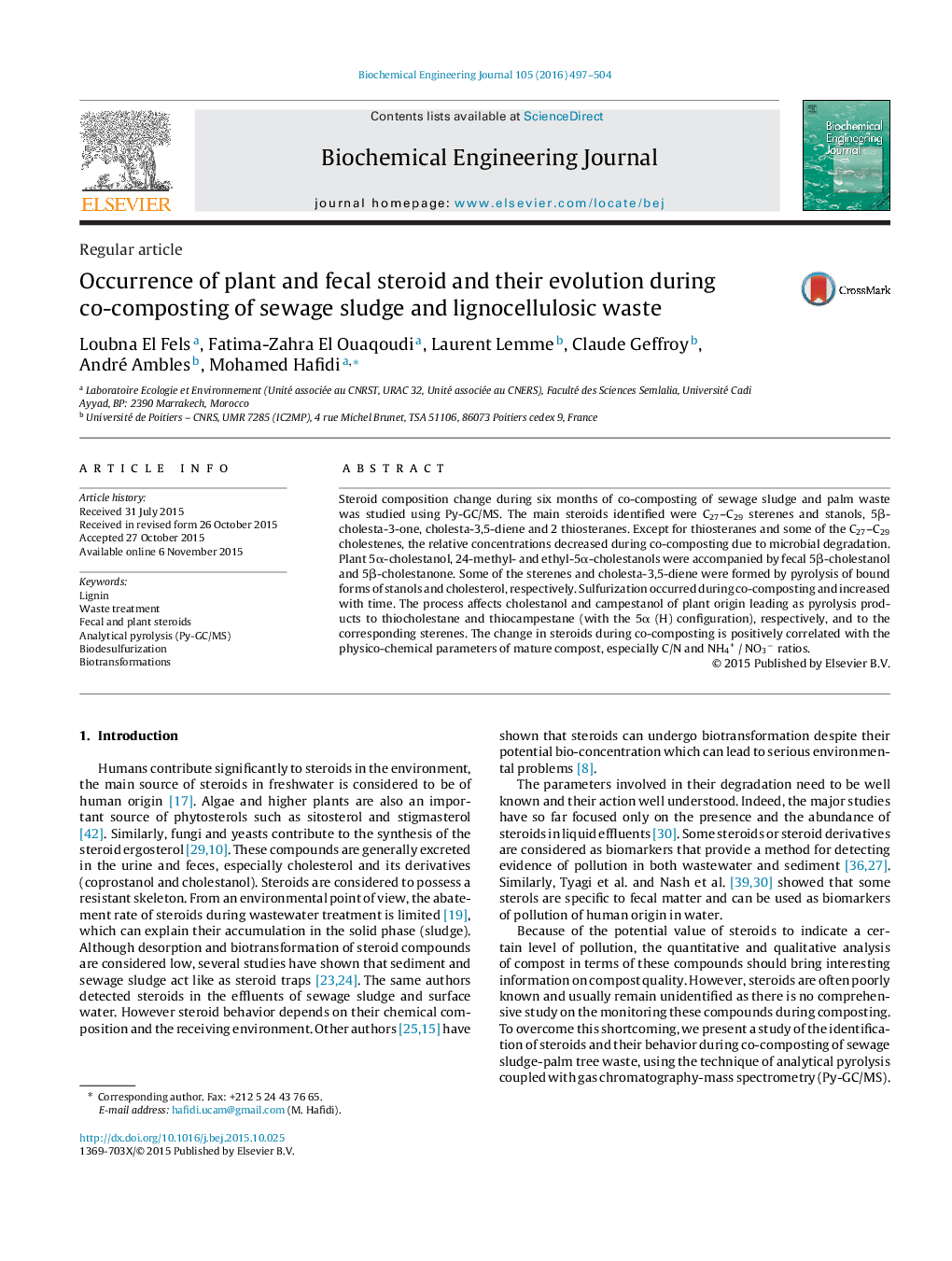| Article ID | Journal | Published Year | Pages | File Type |
|---|---|---|---|---|
| 10160560 | Biochemical Engineering Journal | 2016 | 8 Pages |
Abstract
Steroid composition change during six months of co-composting of sewage sludge and palm waste was studied using Py-GC/MS. The main steroids identified were C27-C29 sterenes and stanols, 5β-cholesta-3-one, cholesta-3,5-diene and 2 thiosteranes. Except for thiosteranes and some of the C27-C29 cholestenes, the relative concentrations decreased during co-composting due to microbial degradation. Plant 5α-cholestanol, 24-methyl- and ethyl-5α-cholestanols were accompanied by fecal 5β-cholestanol and 5β-cholestanone. Some of the sterenes and cholesta-3,5-diene were formed by pyrolysis of bound forms of stanols and cholesterol, respectively. Sulfurization occurred during co-composting and increased with time. The process affects cholestanol and campestanol of plant origin leading as pyrolysis products to thiocholestane and thiocampestane (with the 5α (H) configuration), respectively, and to the corresponding sterenes. The change in steroids during co-composting is positively correlated with the physico-chemical parameters of mature compost, especially C/N and NH4+ / NO3â ratios.
Related Topics
Physical Sciences and Engineering
Chemical Engineering
Bioengineering
Authors
Loubna El Fels, Fatima-Zahra El Ouaqoudi, Laurent Lemee, Claude Geffroy, André Ambles, Mohamed Hafidi,
